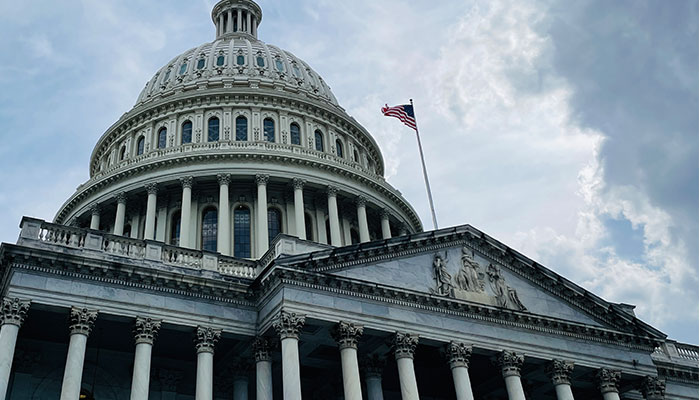What is a debt ceiling?
A debt ceiling is the legal limit that the government can borrow. Not very different from your credit card limit, the idea of a government debt ceiling is to limit the government’s ability to overly stretch beyond its means. The current US debt ceiling sits at $31.4 trillion – or 1.35 years’ worth of all goods and services produced in the US economy last year.

It is not unusual to change the ceiling, provided the action is authorised by the US Congress. In fact, the debt ceiling has been lifted many times in the past, especially during economic crisis when the government needs money to stimulate the economy. The US congress had raised the ceiling 24 times since the year 2000, including six times in response to the 2008 Global Financial Crisis (GFC) between late 2007 and 2010, and five times between 2019 and 2021 in response to the COVID-19 pandemic.
The result? Ballooning US government debt. The government debt tripled in the decade since GFC, rising from $8 trillion prior to the GFC to $24 trillion before the start of COVID-19 pandemic. The spending during the pandemic added another $7 trillion, pushing the debt to the current ceiling.
Why is it important to uncap the current ceiling?
Given tax receipts are not enough to cover the expenses and printing money is not an option, the government must borrow money from the public to fund its spending.
According to the estimates of the US Department of Treasury, the US government will run out of cash by June 5 if the current ceiling is not lifted. The implications? The US government may not be able to pay for wages of public servants, running public schools and hospitals, and to service their existing public debt. Since the US government debts are considered risk-free investments around the world, any risk of defaulting on the debt will significantly raise the interest rate for all other government and corporate bonds and squeeze their cash flows. A major global recession will be unavoidable.
What is the solution?
The newly passed legislation would temporarily suspend the debt ceiling until 2025. This allows the US government to pay their bills – but with strings attached. The legislation will cap future government spending, seek ways to save unspent COVID-19 funds, and enforce a tax code on the rich - an effort to secure savings and restrict future spendings.
Should the sky be the limit?
Temporary suspension of the debt ceiling has already been used five times since 2013. If it is frequently used, why not scrap the ceiling all together? Not necessarily. If the government borrowed too much that is deemed as unsustainable, the market may refuse to subscribe to the government debts – essentially imposing a hard ceiling. We don’t have to go far into history to search for the potential implication, the 2012 European debt crisis poses a heavy toll for the countries involved.
The self-imposed ceiling can serve as a good discipline device when the government is making decisions on spending. Although stimulating the economy during crisis is often important and urgent, governments should not forget to invest in infrastructure and education to enhance future productivity growth, which is the key factor that drives long-term economic prosperity.
At the end of the day a government can only repay its debt with a fast-growing economy.
Dr Ben Zhe Wang is an Associate Professor in Economics in the Department of Economics and Centre for Risk Analytics at Macquarie Business School.



